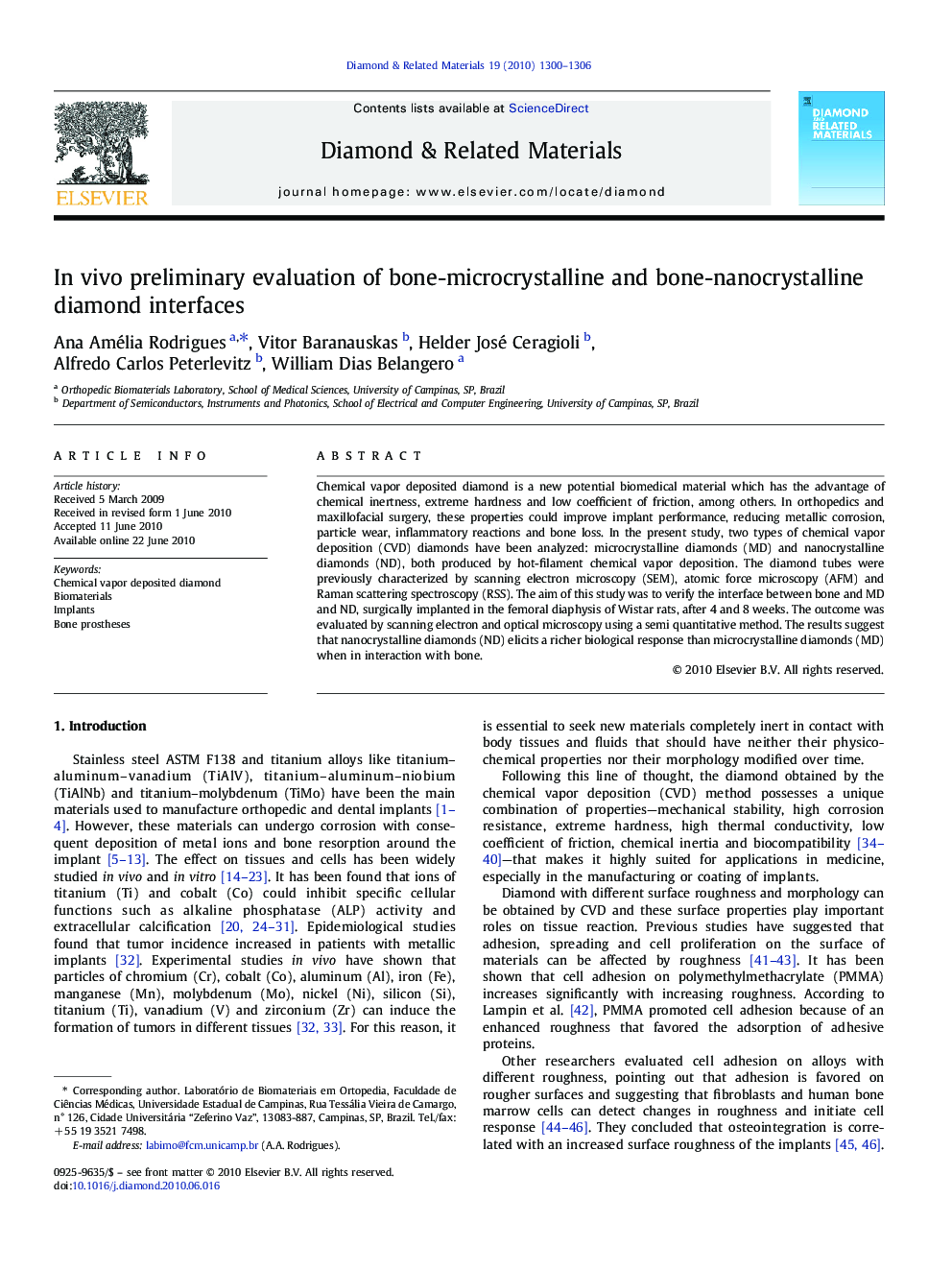| Article ID | Journal | Published Year | Pages | File Type |
|---|---|---|---|---|
| 703060 | Diamond and Related Materials | 2010 | 7 Pages |
Chemical vapor deposited diamond is a new potential biomedical material which has the advantage of chemical inertness, extreme hardness and low coefficient of friction, among others. In orthopedics and maxillofacial surgery, these properties could improve implant performance, reducing metallic corrosion, particle wear, inflammatory reactions and bone loss. In the present study, two types of chemical vapor deposition (CVD) diamonds have been analyzed: microcrystalline diamonds (MD) and nanocrystalline diamonds (ND), both produced by hot-filament chemical vapor deposition. The diamond tubes were previously characterized by scanning electron microscopy (SEM), atomic force microscopy (AFM) and Raman scattering spectroscopy (RSS). The aim of this study was to verify the interface between bone and MD and ND, surgically implanted in the femoral diaphysis of Wistar rats, after 4 and 8 weeks. The outcome was evaluated by scanning electron and optical microscopy using a semi quantitative method. The results suggest that nanocrystalline diamonds (ND) elicits a richer biological response than microcrystalline diamonds (MD) when in interaction with bone.
